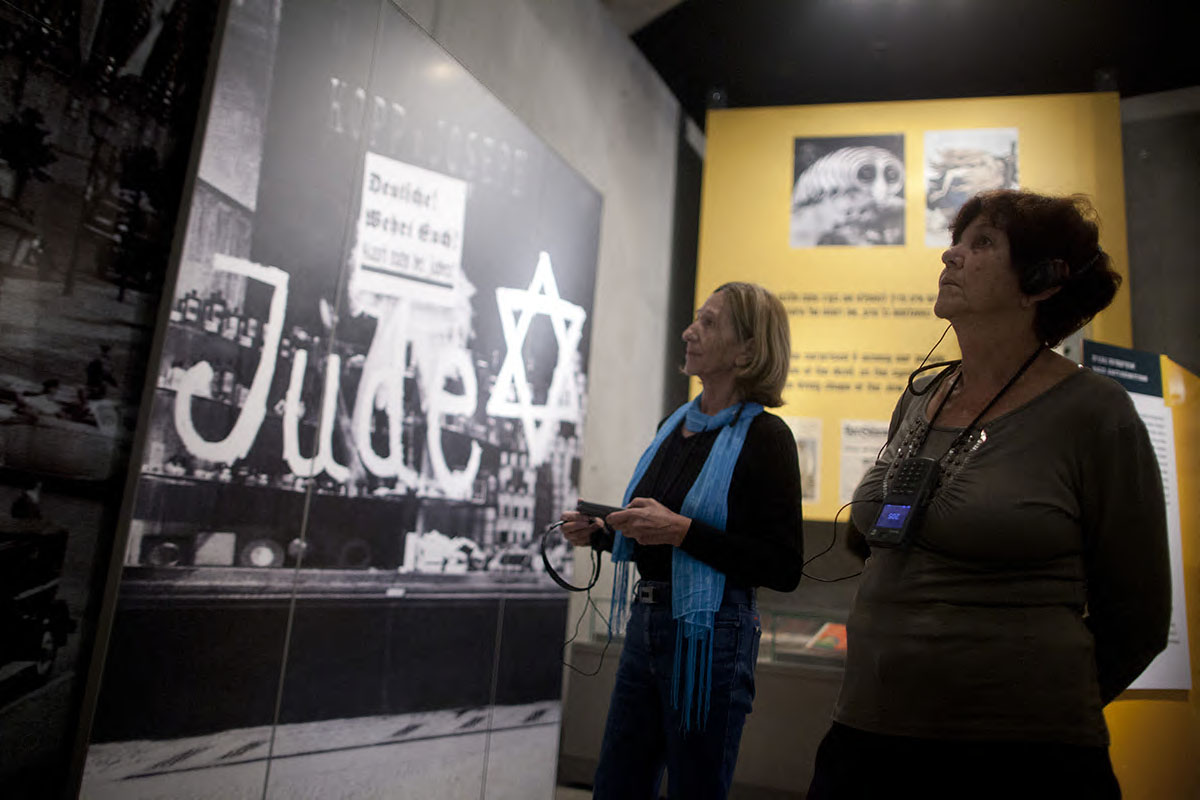Isaak Gofman was born in 1894, according to his military records in Mogilev, Belorussia. He lived in the town of Krasnopolie, 100 kilometers southeast of Mogilev. He was drafted into the Red Army at the end of July 1941 – a month after the beginning of the Soviet-German war. His family did not succeed in fleeing eastward and remained under German occupation.
Gofman was assigned to the Western Front as a sapper with the 49th Engineers Brigade and, in that capacity, took part in the defense of Moscow in the fall of 1941. In September of that year he was wounded. Although the wound was not serious, due to his "advanced age" of 47, after being released from hospital Gofman was returned to the same brigade, but as a military tailor (he was promoted to the rank of corporal [iefreitor]). His unit fought in western Russia and the Baltics. In 1944, Gofman was awarded the For Battle Merit medal and later, retroactively, the medal "For the Defense of Moscow." In the same year, he learned that his family – his wife and their adult daughter and ill son had been killed by the Germans. Stunned, he wrote a letter to Ilya Ehrenburg, in which he stressed the imperative of taking revenge.
Isaak's younger brother Mote Gofman (who was born in 1905) was a lieutenant-colonel in the Red Army and deputy commander for political matters (a "zampolit") of an infantry regiment. Mote ended the war in Germany. He was awarded two Orders of the Patriotic War. Mote died in 1980.
In 1985, in honor of the 40th anniversary of the end of World War II, Isaak Gofman was awarded by the Soviet authorities his only military order. The year of his death is not known.
An excerpt from the letter sent by Isaak Gofman to Ilya Ehrenburg in March 1944
"I will write about another tragedy: that of Krasnopolie. 1,800 Jews perished there. My family was among them: my daughter, a beauty, and my ill son and my wife. Of all the Jews of Krasnopolie only one, Lida Vysotskaia, miraculously survived. She wrote me about all this. I learned that the day before the shooting, when it was impossible to get out of the ghetto, my wife, with the infamous badge on her chest, made her way to town to get dried apples for her sick son. She wanted to prolong his life at least for a day, and her heart was beating with her unhappy love for her son. On October 20, 1941, the Germans rounded up and shot them all. They tortured the children for two months and then killed them. My son had been sick for a long time, but doctors managed to save him. Soviet science had saved him, but those beasts killed him with a machine-gun.
I am a husband without a wife, and a father without children. I am no longer young, but I have been fighting for three years. I have taken revenge and I will continue to take revenge. I am the son of a great motherland and I am a soldier of the Red Army. I raised my younger brother and now he too is fighting. He is a lieutenant-colonel on the 1st Ukrainian Front. He is also taking revenge. I have saw fields littered with the corpses of the Germans, but that is not enough. How many more of them should be killed for each dead child! Before my eyes, in the woods and in the trenches dugout, there stands the tragedy of Krasnopolie – where children were killed, [as they were killed] in other towns and villages, [not only Jews, but] children of all nationalities. I swear that I will [continue to] take revenge, as long as my hand can hold a weapon."
March 10, 1944.






